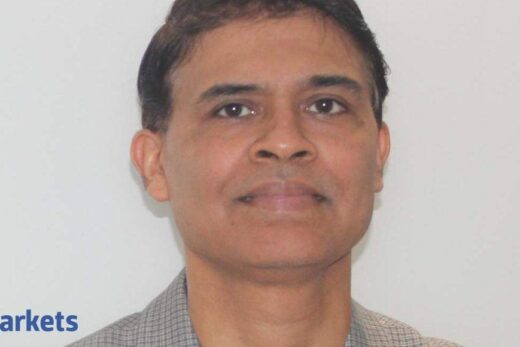What is your market view? Are we in for a pause, are we in for a retreat or will this market continue to climb the wall of worry?
Volatility will be there but the direction of the markets is clearly on the upside. It is a buy-on-dips market on the back of very strong earnings expectations for Q4 and the whole of FY22, even extending into FY23. The confidence comes in with vaccination now being in full swing. We are fearing a second wave right now. But that could be temporary. We could see a spike for a month or two in the number of Covid cases but otherwise, the economy is reviving very well and it is likely to continue. According to me it is a bullish market even now.
You have Eicher, Maruti, HDFC Life and HDFC Bank in your portfolio. Have you changed your orientation given that the current orientation of the market is tilted towards cyclicals and industrials?
We have been very overweight on the consumer space for many years now and within that space, given that it is going to be a very strong economic recovery — the TINA factor (there is no alternative) applies to the consumer space and particularly the staple space. All these years, market caps of these stocks increased irrespective of whether earnings came through or PE multiples expanded.
I do not think that thing can continue now with the full blown economic recovery. There will be a rotation trade. So basically the cyclical sectors, the sectors which are very strongly correlated to the economy, are going to do much better. Funds would move out of staples which have given very healthy returns. They could be in for some time consolidation given the valuation. In that aspect we have reduced our allocations to the consumer space. Instead of being extremely overweight in the staple space, we have moved down to an equal weight position.
On the other hand, because consumers are likely to spend more on discretionary items, we are overweight on the consumer discretionary range and this would include automobiles. On the industrial side, we have again gone overweight as we expect full-blown economic recovery. The Budget had allocations for capital formation which had been missing in India over the last 10 years ever since The Global Financial Crisis. The full-blown impact of this is going to be seen within the next four to six quarters. But this is definitely one trade which would likely play out favourably.
So we are trying to get a foothold into some of the industrial names we are positive on. These are some of the sector changes that we have made. In terms of stocks, we have very recently bought Gland Pharma on the day of listing. It is a high quality injectables play with 20-25% growth visibility over the next three years. The valuations from the next 3-5 years’ perspective looks pretty conducive. So, that is one bottom-up stock that we have included in the portfolio.
The second is where we think the entire focus will be on largecap banks — both private and PSUs. Of course, in the PSU space, the only choice is SBI and nothing else.
So these are the two stocks that we have included. In terms of what went out of the portfolio was midcap bank — the City Union Bank. We also trimmed down some allocations and rebalanced the portfolio (10:44).
In order to make space for Gland Pharma and State Bank of India, you must have taken some chips off the table. Are you finally moving out of your comfort zone which is Nestle and Asian Paints?
It is a rebalancing on the portfolio. It is not that we have exited many of the names fully but we have taken some allocations off the table in the consumer staple names. Specifically we have taken allocation off
which has been there in the portfolio for long. It has been a big winner but it is time to make room for some high quality injectables players. The valuations are very conducive and so that went out.
Midcap banks are out of focus for the next five-ten years. Be it the technology capability or regional presence or the capital buffer, provisioning — all of these things are worrisome points for the midcap banking space. So, we have taken allocation off that sector as a whole. So some trimmings here and there has given way to buy new stocks in the portfolio.
In the debate on value versus growth, you have always said that for value, only buy deep value. Where do you see deep values? PSUs are something where you find value right now. Why is it so?
The idea is to have a barbell strategy. Basically growth works and that is proven but there is one segment of the market, the public sector undertakings, where there is deep value. These deep values cannot sustain for very long. Some of the monopolies in the PSU space are still trading at ridiculous values. If you take oil marketing and refining companies or take Concor or some of the material names in the PSU space –with dividend yields in excess of 5-7-10% and PE multiples in single digits, that looks to be on the extreme side.
So the majority of the stocks should be growth stocks in the portfolio but there should be some room for including these value stocks. That is how I would look at it and I have some of these names, the deep value names which I reckon could have some decent upside in the portfolio.
Besides PSUs, where else do you find value in the market right now?
Value has to be looked at in conjunction with growth. So, obviously you are going to see some hyper growth in Q4 and FY22 as a whole thanks to a small base. But what may not be fully factored in is the growth in technology names. Technology names do not have atrocious valuations. They are at multi year highs but the way things are playing out and the digital transformation or the Cloud migration spend that is likely to be there for the next two years, can continue into the next three, five years as well.
I would not think that all of that is in the price. So, there is one area of value in the technology names, where given the growth that could emerge, stocks could double from these levels over the next three, four years. That is one area where there is some very decent value on the table which has not yet been fully factored in.
How are you trying to slice and dice and find those plays and does the same rationale also apply to some of the pharma names?
The biggest value driver in the technology space would be digital transformation and cloud migration. It has now become almost impossible for any company to not have digital capabilities, to not move their core businesses on to the cloud. Otherwise, these companies will be left behind in a big way. So that is one area and companies where the share of digital piece versus the legacy piece skews in favour of the digital piece, would see higher than the industry growth rates. If they are able to have these transformations, we could see some margin augmentation going into the future.
Of course, this is also going to help the IT companies because billing rates inch up may be a dollar or two within the next two years. I do not think the market understands all of that. As far as the pharma space is concerned, we had a bumper performance during the last pandemic that we saw in March, April, May and June last year (Q1 of FY21). The base is very high, but if you have to normalise things from FY20, the CAGR growth rates in almost all Indian pharmaceutical companies is at double digits. When I say double digits, it could be high double digits and somewhere between 15% and 20% valuations. We have seen a correction in the pharmaceutical space as a whole over the last six, nine months and values have become extremely reasonable.
So the opportunity is there in healthcare and the pharmaceutical space and it is both from the Indian pharmaceutical market where visibility on growth for FY23 is better than FY22. Now that again we are in for a second lockdown, API prices and raw material costs are going up. But suffice to say, the volume growth in the pharma space for visibility for FY23 is very high. So one would do well to be basically overweight on pharmaceuticals and technology.
What about consumer discretionary?Would you narrow it down further into where you feel growth will play out?
Low ticket consumer discretionary items — be it consumer durables like room air conditioning or kitchen appliances — are more permanent than what it used to be two, three years ago. This is mainly because lifestyle has changed post pandemic.
I would focus on consumer discretionary names, including automobiles where we are seeing a strong traction. Numbers are not yet coming through because of shortages of antilock breaking systems or semiconductors but there is an inherent latent demand in the system. Automobiles also fall within the consumer discretionary segment.
On the other hand, things to do with living in the house, working from home — things like air conditioners, electrical appliances or kitchen appliances matter. This is one space which looks very exciting from a penetration point of view, the latent demand in the system point of view, PLI point of view and margins point of view.
One simple question which is puzzling everyone is where is demand getting generated? Stimulus on interest rates, liquidity boosters helped us but how will this demand keep on generating when we know that the second Covid wave is there?
First of all, ample liquidity is coming at lower interest rates in the system. Government is giving a helping hand to anybody and everybody who wants to borrow at these rates and going up with their businesses.
The government is spending more than what it is earning as the FRBM Act has gone out of the window. Forget 3.3%, we are almost at 9% and next year at around 6%. These numbers suggest that the government is in a mood to spend and of course when government spends that money moves in the economy. So it could be job creation, it could be income growth. It is a multiplier effect. A virtuous cycle kicks off and that is where the demand is coming through.
Thirdly, the real GDP growth is bouncing back from minus 7.8 to 10.5- 12% on the positive side in real terms and 14-15% in nominal terms. That will mean income will get generated at an accelerated pace. We have seen that over the last four-five years. During tough reforms by the government, we saw India go through a transient phase when 8% GDP fell to 4% and then 2% and then came recession. Corporate profits to GDP fell from 6% to 3% to less than 2%-1.5%. All these things mean that the positive sides of the reforms will start to get felt. They are already starting to get felt as the GST numbers are going up again. That acts as a multiplier. I think we are in a for a virtuous cycle of money supply, income generation and jobs growth which will trickle down into increased demand, not to say incentivising exports will also help and government is also again doing all it can in making PLI very popular. That itself will have a rub off impact on income generation and demand growth (7:49).
You said you like autos. Four-wheelers is a different kettle of fish but what about two- wheelers?
It is a case of supply constraint. There are not enough antilock braking systems you have or corporates to talk about it. You have heard Eicher talk about it, you have heard Hero MotoCorp talk about it, Bajaj is also talking about it. If there is a severe shortage of semiconductors and specifically antilock braking systems for the two-wheeler space, we are not seeing the numbers. But does that mean that the demand has waned off? I really do not think so. Once this whole thing normalises within next three to four months, we are again going to see the numbers inch back to what the estimated numbers would be like. I would reckon these as one-offs rather than being the normal case.
Six weeks ago, the market narrative was that India has done much better on Covid and it is time to look at industrials and cyclials. But now the narrative is that India has seen the highest number of single day cases ever and US has seen the highest number of vaccination ever. It is a completely opposite data point versus what we saw six-eight weeks ago. What does that mean for portfolio investors?
The key risk factor over the last one year has always been the rise in second wave of Covid. The second factor was the sharp increase in bond yields in India and globally. Of course, we are seeing a second wave come through in India but I really do not think that the situation is the same as the last around. The mortality rates are still within control and of course the number of cases have been more asymptomatic. But there is hope, there is vaccination that is happening at full swing and the situation is not as bad as it was during the last lockdown.
A known unknown is always a better situation to be in as far as portfolio investors are concerned than a unknown unknown. We will see the markets and even global markets move between risk on and risk off because one has to live with this Covid-19 for a long time now and even into the future we will have to deal with the Covid situation on an ongoing basis. So we are gyrating between a risk on and a risk off scenario on an ongoing basis. The direction of the vaccination and the government support are clearly favouring a recovery and more so in the industrial space because we have seen a very lacklustre capital formation over the last decade or so.
Now what are the ingredients required for industrial revival? First, is the profitability due to cost cutting and the demand generation. Operating leverage profitability is definitely on the up move. Second is the low interest rate regime, One can put in capex at lower cost. Third is capacity utilisation which again is very decent and once capacity moves beyond 75%, there is a case to put in capex. The fourth is the willingness of the government to push the pedal hard when it comes to the government playing its part on its balance sheet, use its balance sheet to trigger a private capex recovery. All these things would be reckoned by portfolio investors. The opportunity is much better in terms of visibility than what it was 12 to 24 months ago.



